Abstract
Twenty obligate carriers of infantile hypophosphatasia (HOPS), a severe autosomal recessive metabolic bone disorder, were studied and compared with 36 controls. Decreased serum alkaline phosphatase activity and increased urinary phosphoethanolamine excretion were confirmed in the HOPS carriers. Relative hyperphosphatemia was documented for the first time in the carriers. Logistic regression analysis was used to develop models for the diagnosis of and screening for HOPS carriers in the high-risk population of Manitoba Mennonites. Models based on serum alkaline phosphatase activity and on serum phosphate levels with or without urinary phosphoethanolamine excretion were used for diagnostic purposes. A model based on serum alkaline phosphatase activity and on the serum phosphate level was the most suitable for screening.
Full text
PDF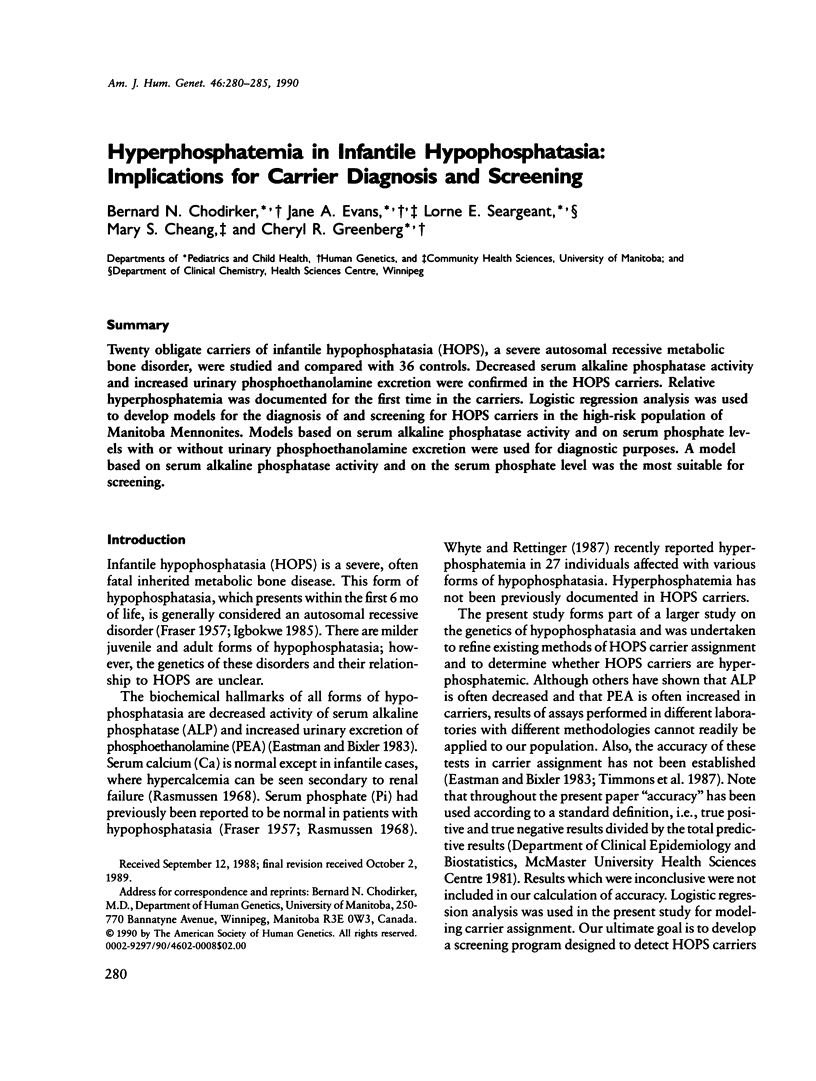
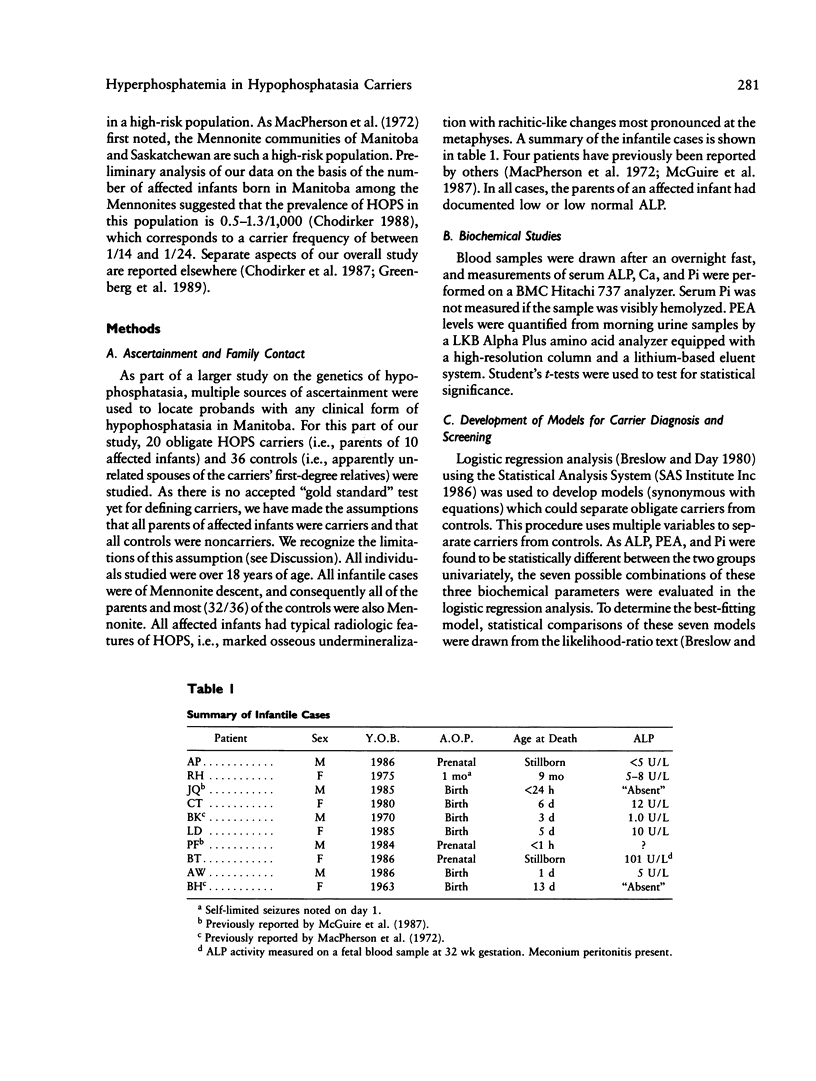
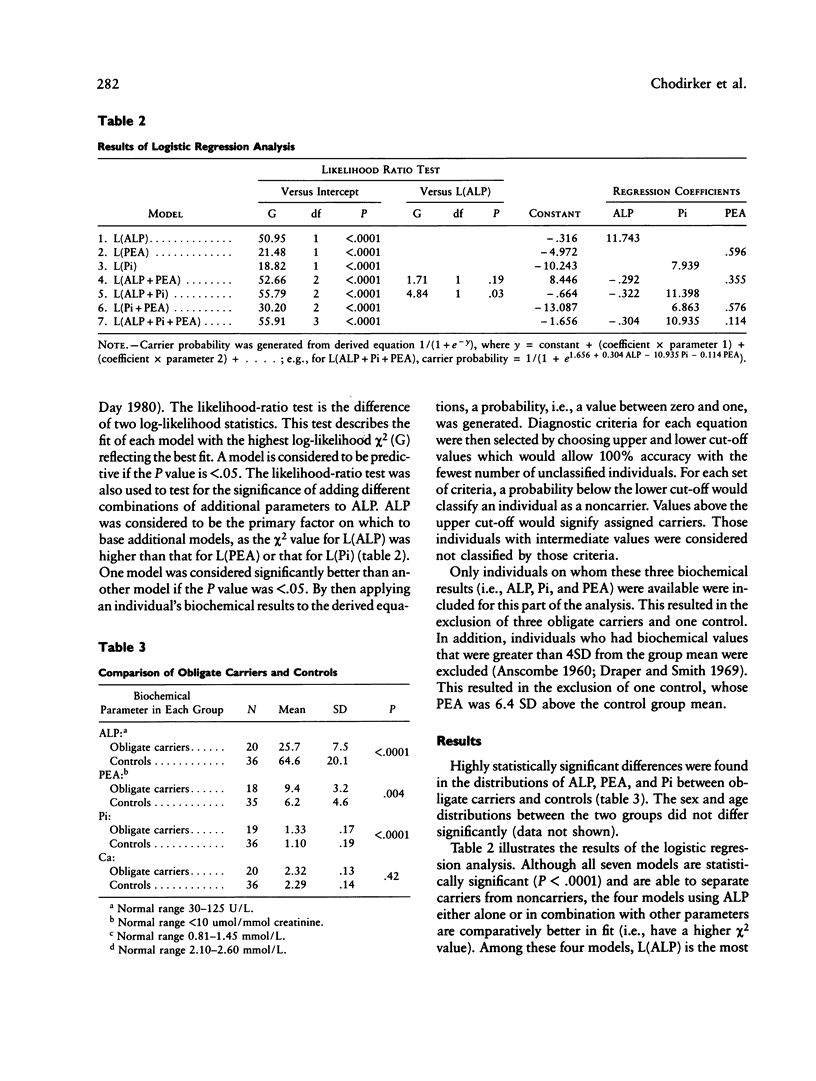
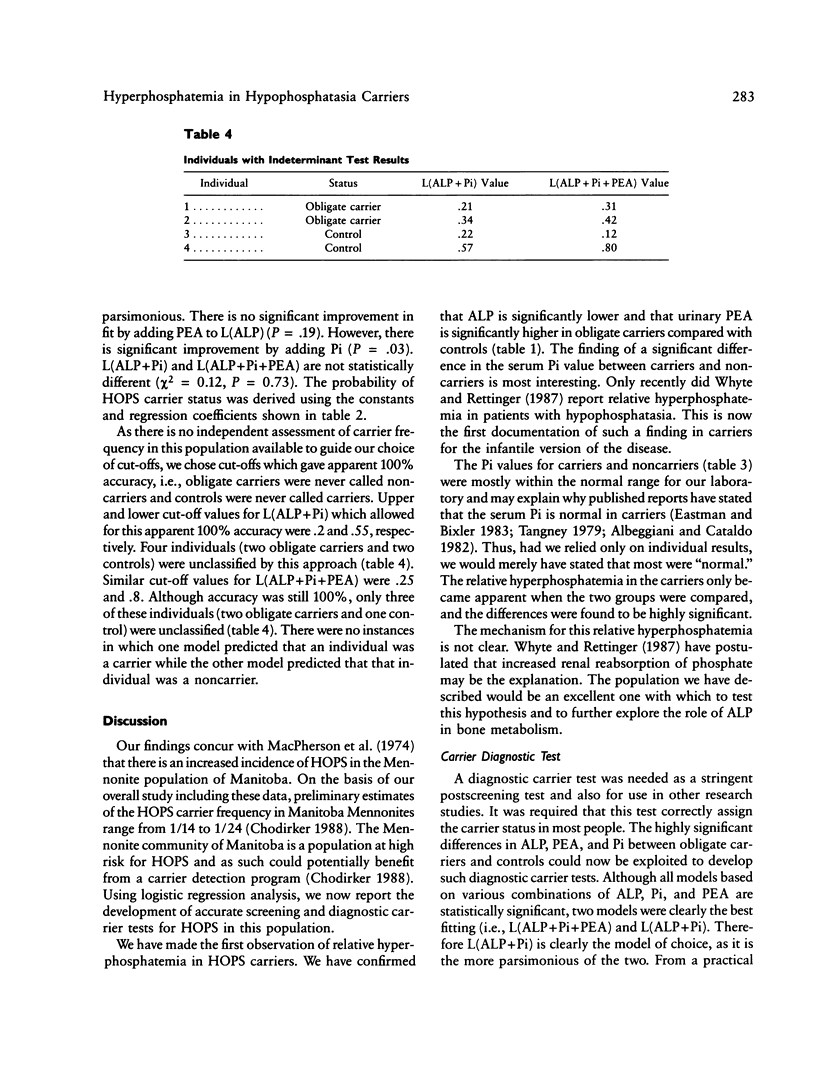
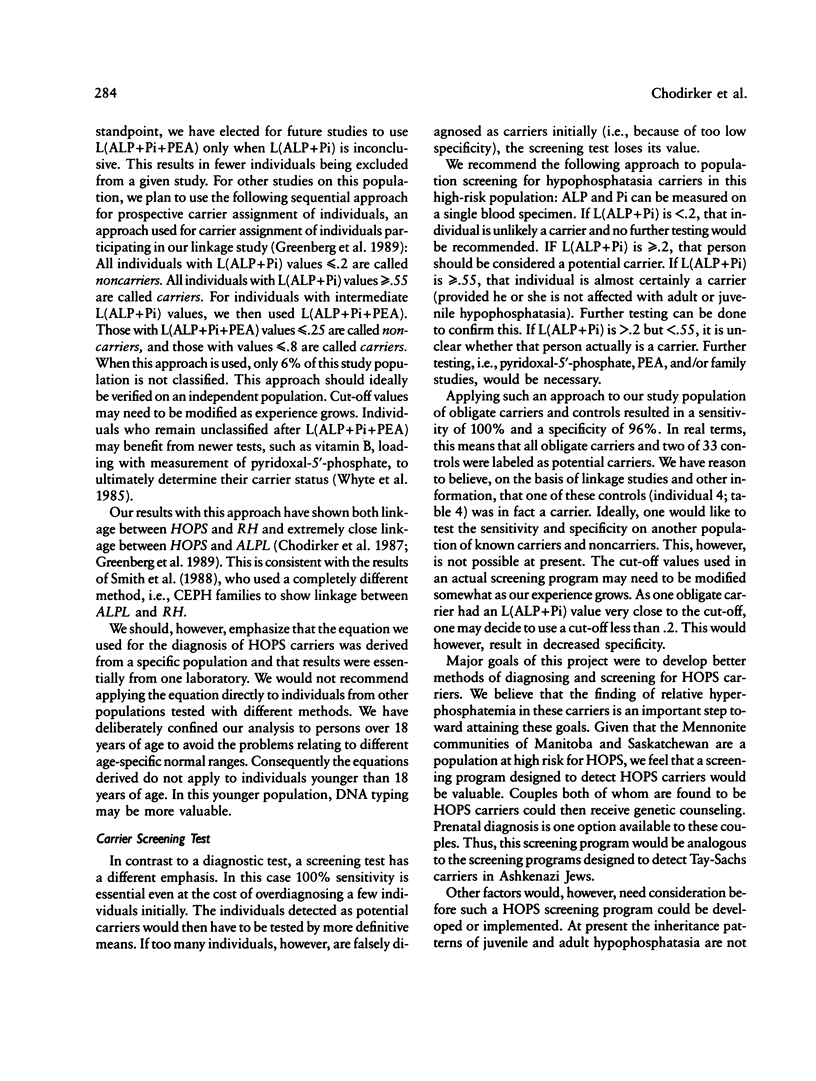
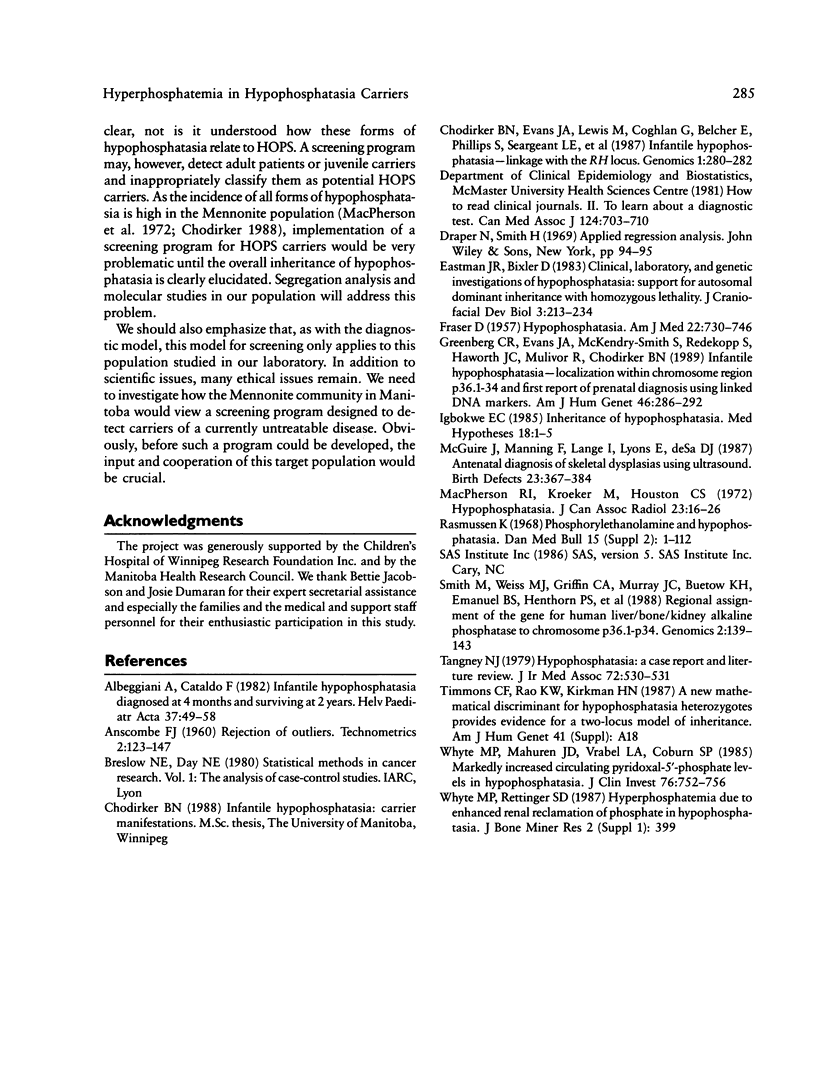
Selected References
These references are in PubMed. This may not be the complete list of references from this article.
- Albeggiani A., Cataldo F. Infantile hypophosphatasia diagnosed at 4 months and surviving at 2 years. Helv Paediatr Acta. 1982;37(1):49–58. [PubMed] [Google Scholar]
- Chodirker B. N., Evans J. A., Lewis M., Coghlan G., Belcher E., Philipps S., Seargeant L. E., Sus C., Greenberg C. R. Infantile hypophosphatasia--linkage with the RH locus. Genomics. 1987 Nov;1(3):280–282. doi: 10.1016/0888-7543(87)90056-5. [DOI] [PubMed] [Google Scholar]
- Eastman J. R., Bixler D. Clinical, laboratory, and genetic investigations of hypophosphatasia: support for autosomal dominant inheritance with homozygous lethality. J Craniofac Genet Dev Biol. 1983;3(3):213–234. [PubMed] [Google Scholar]
- FRASER D. Hypophosphatasia. Am J Med. 1957 May;22(5):730–746. doi: 10.1016/0002-9343(57)90124-9. [DOI] [PubMed] [Google Scholar]
- Greenberg C. R., Evans J. A., McKendry-Smith S., Redekopp S., Haworth J. C., Mulivor R., Chodirker B. N. Infantile hypophosphatasia: localization within chromosome region 1p36.1-34 and prenatal diagnosis using linked DNA markers. Am J Hum Genet. 1990 Feb;46(2):286–292. [PMC free article] [PubMed] [Google Scholar]
- Igbokwe E. C. Inheritance of hypophosphatasia. Med Hypotheses. 1985 Sep;18(1):1–5. doi: 10.1016/0306-9877(85)90112-4. [DOI] [PubMed] [Google Scholar]
- Macpherson R. I., Kroeker M., Houston C. S. Hypophosphatasia. J Can Assoc Radiol. 1972 Mar;23(1):16–26. [PubMed] [Google Scholar]
- McGuire J., Manning F., Lange I., Lyons E., deSa D. J. Antenatal diagnosis of skeletal dysplasia using ultrasound. Birth Defects Orig Artic Ser. 1987;23(1):367–384. [PubMed] [Google Scholar]
- Rasmussen K. Phosphorylethanolamine and hypophosphatasia. Dan Med Bull. 1968 Sep;15(Suppl):1–112. [PubMed] [Google Scholar]
- Smith M., Weiss M. J., Griffin C. A., Murray J. C., Buetow K. H., Emanuel B. S., Henthorn P. S., Harris H. Regional assignment of the gene for human liver/bone/kidney alkaline phosphatase to chromosome 1p36.1-p34. Genomics. 1988 Feb;2(2):139–143. doi: 10.1016/0888-7543(88)90095-x. [DOI] [PubMed] [Google Scholar]
- Tangney N. J. Hypophosphatasia: a case report and literature review. Ir Med J. 1979 Dec;72(12):530–531. [PubMed] [Google Scholar]
- Whyte M. P., Mahuren J. D., Vrabel L. A., Coburn S. P. Markedly increased circulating pyridoxal-5'-phosphate levels in hypophosphatasia. Alkaline phosphatase acts in vitamin B6 metabolism. J Clin Invest. 1985 Aug;76(2):752–756. doi: 10.1172/JCI112031. [DOI] [PMC free article] [PubMed] [Google Scholar]


